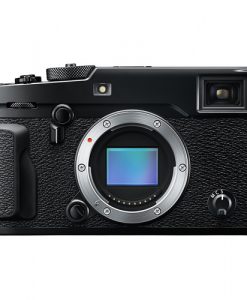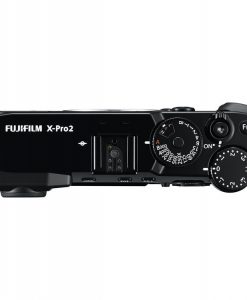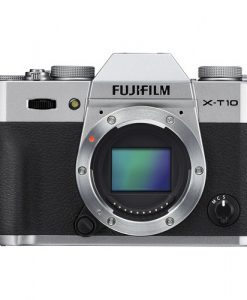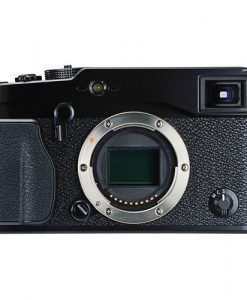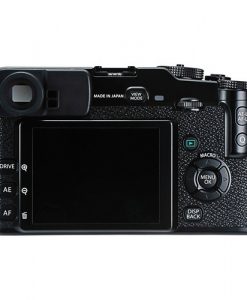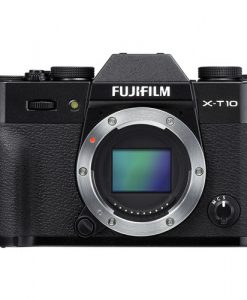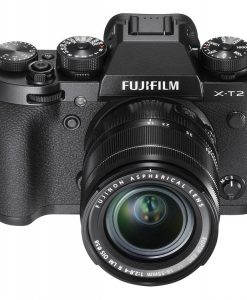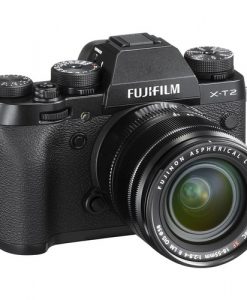Shop/Cameras/Nikon Cameras
Nikon Df DSLR Camera (Body Only, Silver)
₱135,999.00
16.2MP FX-Format CMOS Sensor
EXPEED 3 Image Processor
3.2″ 921k-Dot LCD Monitor
Dedicated Still Image Only Camera
Multi-CAM 4800 39-Point AF Sensor
Native ISO 12800, Extended to ISO 204800
5.5 fps Shooting at Full Resolution
Mechanical Exposure Control Dials
Compatible with AI and Non-AI Lenses
Rugged Magnesium Alloy Body
The silver Nikon Df DSLR Camera revolves around a unique manual and mechanical design that champions a simple and intuitive method of working, while still retaining the highest imaging quality and functionality available. Featuring a full-frame, FX-format 16.2MP CMOS sensor and EXPEED 3 image processor, the Df is capable of producing high-resolution, well-detailed still imagery with exceptional color rendition, tonal gradation, and highlight and shadow detail. A notable low-light sensitivity range of ISO 100-12800 can be further expanded to ISO 50-204800 for challenging lighting conditions and a top continuous shooting rate of 5.5 fps aids in working with fast-moving subject matter.
The manually-configurable design of the Df blends a timeless control scheme with contemporary precision to enable simple and direct handling of all exposure features of the camera. Utilizing dedicated shutter speed, exposure compensation, ISO sensitivity, exposure mode, and release mode dials, efficient control is possible without needing to delve into a complex menu structure. For viewing, both an optical glass pentaprism viewfinder and 3.2″ 921k-dot LCD monitor are housed within the magnesium alloy body design. When using the LCD for live view shooting, the image can be magnified up to 19x for critical focus and a fast contrast-detection focusing method is used. Both a hot shoe and flash sync terminal are integrated into the body’s design, too, as well as a unique mount system that employs a metering coupling lever to enable the use of both AI and non-AI lenses for extensive support of NIKKOR lenses from the past and present.
When working with the optical viewfinder, the Multi-CAM 4800 AF system is used and employs 39 points about the frame, with nine cross-type points for added accuracy when photographing in more difficult light. Seven centrally-located sensors are also compatible with f/8 or faster lenses, which greatly enhances the autofocus performance when working with longer, telephoto lenses used in combination with teleconverters.
Accurate exposure metering is done using a 2,016-pixel RGB sensor and Nikon’s Scene Recognition System, which automatically analyzes all aspects within a scene, including brightness, contrast, and color, and compares these values to an on-board database in order to determine an appropriate exposure value that is consistent from image to image. White balance, autofocus, and i-TTL flash metering also use this system and, additionally, the Spot White Balance feature can be used in live view for pin-point selection of a white area within the scene to deliver true color balance. Built-in HDR and Active D-Lighting can be used to extend the apparent dynamic range of a scene and Picture Control settings can be applied to refine the overall look and feel of colors and contrast in-camera.
- Timeless Design with Contemporary Performance
- Separating itself from other DSLRs, the Df revolves around a classically-inspired design that employs a manual control scheme and a pared-down interface to inspire a more intuitive and efficient method of working. As a still image-only camera, key design elements cater to the needs of a photographer, including dedicated mechanical dials for shutter speed, ISO sensitivity, exposure compensation, exposure mode, and release mode control as well as the incorporation of a bright pentaprism viewfinder, cable release socket, hot shoe, and flash sync terminal. The magnesium alloy body also houses a large 3.2″ 921k-dot LCD monitor, which can be used for live view monitoring, image playback, and menu navigation.
A unique lens mount system has also been developed and integrates a metering coupling lever to enable the use of both AI (Aperture Index) and non-AI lenses. This means that in addition to supporting current AF-S, AF-D, and AF NIKKOR lenses, past manual focus, non-AI lenses can also be used without any modification necessary.
- 16.2MP FX-Format Sensor and EXPEED 3 Image Processor
- The 16.2 megapixel full-frame (FX) CMOS sensor and EXPEED 3 image processor work in tandem to produce overall high image quality with notable detail, dynamic range, color accuracy, and low-light sensitivity to a native ISO 12800, which is further expandable to ISO 204800. This still image-only camera is also well-suited to working with moving subject matter with a top 5.5 fps continuous shooting rate using either the viewfinder or when working in live view.
- 39-Point Multi-CAM 4800 AF Sensor
- Benefitting the exceptional image quality is an apt AF system that employs 39 distinct AF points, including nine cross-type sensors, to quickly acquire focus in a range of lighting conditions, from -1 to +19 EV. An intelligent Scene Recognition System, typically reserved for exposure metering, benefits the focusing performance by analyzing and identifying subjects to suit panning and tracking-based shooting styles. Depending on the situation, 9, 21, or 39 point arrays can be selected from and seven centrally-located points are compatible with f/8 or faster lenses, extending the auto focusing abilities of the longest lenses used in conjunction with teleconverters. When using this phase-detection focusing method, selectable AF-area modes include: Single-point AF mode, Dynamic-area AF mode, 3D-tracking mode, and Auto-area AF mode.
When working in live view, a contrast-based AF system is employed to acquire focus precisely and can function in continuous, full-time servo mode to better-suit working with moving subjects. Four distinct AF-area modes are available when using the contrast-detection focusing method: Face-priority AF, Wide-area AF, Normal-area AF, and Subject-tracking AF. Additionally, benefitting working with manual focus when in live view, the image can be magnified up to 19x for critical examination and easier focus confirmation.
- Scene Recognition System
- The intelligent Scene Recognition System with 3D Color Matrix Metering II utilizes a 2,016-pixel RGB sensor to evaluate and analyze all aspects within a scene, including brightness, contrast, subject distance, and the scene colors, to quickly determine an accurate exposure and white balance setting to best render the scene at hand. The information gathered is also checked against onboard reference images to ensure consistency from image to image in regard to exposure, white balance, i-TTL flash settings, and subject-tracking AF performance.
- Other Camera Features
-
- Picture Control modes can be directly accessed via a dedicated button and allow you to set predefined looks to imagery in-camera, and include Landscape, Monochrome, Neutral, Portrait, Standard, Vivid, and user-customizable settings.
- Active D-Lighting helps to preserve both highlight and shadow details when working in contrast-rich scenarios, such as backlit lighting. Utilizing the EXPEED 3’s processing power, a more controlled image will be produced with brightness values closer to how they are naturally seen. This mode is suitable for working with moving subjects.
- Built-in HDR works to extend the tonal and exposure range of a single image by recording two separate exposures and blending them together in order to gain greater highlight and shadow details with an extended range of mid-tones. The smoothness of the edge where the two separate exposures meet can be adjusted for more apparent softness to benefit images with a greater range of encompassed exposure values. This mode is best suited for working with stationary subjects.
- The accessory terminal supports the use of the optional WU-1a Wireless Mobile Adapter to enable remote, instant transferring of photos to Android and iOS mobile devices for sharing online. The GP-1A GPS Unit is also supported, which automatically adds locational information to images’ metadata for geotagging applications.
- Spot White Balance enables precise, selective control of the white balance setting by simply pointing and metering a pure white portion of the scene in order to set the proper color balance when working in live view.
- One memory card slot is available and accepts SD, SDHC, and SDXC type memory cards, including UHS-I SDHC and SDXC cards.
- An in-camera virtual horizon can detect both rolling (horizontal inclination) and pitching (forward or rear inclination) directions and display an electronic level on the LCD when working in live view. The rolling direction of tilt can also be displayed within the viewfinder.
- Supported languages: Arabic, Chinese (Simplified and Traditional), Czech, Danish, Dutch, English, Finnish, French, German, Indonesian, Italian, Japanese, Korean, Norwegian, Polish, Portuguese, Romanian, Russian, Spanish, Swedish, Thai, Turkish, and Ukrainian.








